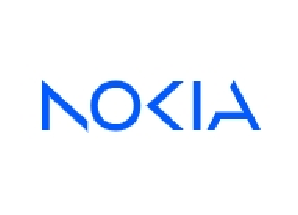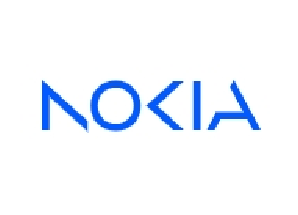AT&T struggles to defend open cloudiness of Ericsson deal
As the network technology boss of AT&T, Igal Elbaz probably has a good idea what his company's big network deal with Ericsson means for the budget. But he deftly swerved an audience question about its impact at an Ericsson event in London last week. "That's probably a question for our analysts," he said, prompting chuckles, when someone asked if capital and operational expenditure would decrease from now on.
The headline figure looks huge. When the contract was announced in December 2023, Ericsson said AT&T's spend could approach about $14 billion over the five-year term of the deal. That obviously works out at roughly $2.8 billion a year, 13% of AT&T's entire capital investment in 2024. Yet Ericsson is believed to have bid aggressively for the work, which involves replacing Nokia at a third of AT&T's mobile sites. While Ericsson's margins have grown fatter since the deal was announced, sources think the damage to profitability will eventually become apparent.
There is certainly no expectation of a big change in overall capital investment this year. Having spent $22.1 billion in 2024, AT&T is guiding for an outlay "in the $22 billion range." This would, however, be about $1.6 billion less than it spent in 2023. Questions about expenditure, both capital and operational, are pertinent because the deal between AT&T and Ericsson has been sold to the market as a monster example of openness and virtualization, concepts previously linked to cost savings.
Yet more than a year into the rollout, there is limited evidence of openness and growing concern about virtualization. In theory, Ericsson's adoption of standardized interfaces, defined by the O-RAN Alliance, should allow AT&T to join an Ericsson part to a different component from another vendor and assemble a multivendor radio access network (RAN). But in a critical domain, AT&T attaches more importance to simplification than diversity.
"Today, every vendor comes with its own management system," said Elbaz on stage at Ericsson's event. "We are moving to one management system." This clearly suits Ericsson, whose Intelligent Automation Platform (EIAP) is the chosen one. Operators used to carve a territory into two or three geographical blocks and award all the RAN work in each block to one big vendor. With AT&T's new approach, Ericsson must instead aim to win as much as it can in what it refers to as a series of horizontal network layers. In service management and orchestration, it has everything.
rApp attack
This does not stop AT&T from running third-party network apps on EIAP, and Ericsson has there been relatively accommodating. "It's a big shift compared with how we built our management systems in the past," Per Narvinger, the head of Ericsson's cloud software and services business group, told Light Reading. "We are building horizontally and having others developing on top."
The apps, whether Ericsson's or someone else's, are supported by a part of EIAP called the Ericsson Intelligent Controller (EIC). But EIC is what the industry refers to as a non-real time RAN intelligent controller (RIC). The "rApps" it facilitates have a response time of more than a second. Anything less would demand a near-real time RIC with its "xApps," and Ericsson does not cater to this technology. "The functionality of xApps is provided by the RAN itself," it previously said. "At this point, we don't see benefits of xApps on top of what our RAN is doing."
But others disagree with the assessment and think Ericsson is being deliberately obstructive. Perhaps the most interesting xApp developer is Cohere Technologies, whose software is designed to boost capacity on existing mobile networks. Vodafone has been a huge champion of it after carrying out successful field trials in Spain. Yet the commercial availability of Cohere's universal spectrum multiplier (USM), as it is called, would conceivably shrink demand for the expensive, high-capacity radios built by Ericsson. And USM, unfortunately, is unavailable in rApp form.
Service management and orchestration is not the only layer in which Ericsson looks dominant at AT&T. Once Nokia's removal has been finished, it will also be the only provider of RAN compute for the main macro network. At the London event, Elbaz talked of connecting RAN technology from CommScope and Corning to EIAP, which appears to have been done through an O-RAN Alliance interface called O1. But the CommScope and Corning technologies in question are for small cells, not main sites. Proof EIAP can function smoothly with another company's RAN, deployed across a big area, is missing.
Radio gaga
Evidence of supplier diversity is more discernible in the hardware layer for radio units. From the outset, AT&T had lined up Fujitsu alongside Ericsson. Last year, it added Mavenir to the roster. But Fujitsu's role appears limited for now to small cells, judging by an update provided at last November's FYUZ event in Dublin. The description of Mavenir's equipment suggests it also falls into the small cell category.
For all its talk about software accounting for a bigger share of future business, Ericsson firmly rejects any suggestion it will retreat from or cede market share in hardware. "We don't really want to lose on the hardware side," said Fredrik Jejdling, the head of Ericsson's mobile networks business group. A lineup of new radios, paraded at the London event, boasts industry-leading features and is powered by Ericsson's in-house silicon.
When it comes to the most advanced 5G products, slotting in will be difficult for any other vendor. This is not just because Ericsson's mobile networks business group, with a budget that Jejdling puts at $3 billion a year, seems to outspend any other 5G company from Europe or North America on research and development. It is also because Ericsson, despite the publicity campaign, appears to have stopped short of fully embracing open RAN.
An Ericsson blog published in mid-November included the following curious line: "To further strengthen the open RAN portfolio, Ericsson is adding OFH Category B with ULPI to our cloud RAN and selected massive multiple input multiple output (M-MIMO) radios, starting in 2025." It is riddled with jargon and technical terminology, but the "OFH Category B with ULPI" essentially refers to the modified open RAN specification for linking radios to RAN compute software in massive MIMO, an advanced 5G technology.
What's important is Ericsson's omission of any reference to purpose-built as opposed to cloud RAN in the context of massive MIMO. Indeed, "purpose-built RAN" is not mentioned until the next sentence about "Category A," the open RAN specification designed for less antenna-rich 5G. The clear implication is that products like 6672, a cutting-edge purpose-built processor, will not support the Category B specification. When Ericsson was asked the question directly in mid-November, its emailed response was that there are "no plans to support that at the moment."
What does this mean for AT&T? Essentially, that in areas where it is deploying Ericsson's massive MIMO, it may have no choice but to buy everything – RAN compute and radios – from Ericsson. Optionality might be there only if AT&T decides to build a cloud RAN in those locations. But cloud RAN is most likely to struggle in the densely populated and traffic-heavy zones where massive MIMO is needed. And Ericsson has stuck to its argument that "purpose-built hardware will continue to be the most energy-efficient and compact hardware for radio site deployments going forward."
Cloud cuckoo land
AT&T does not appear to have made any public statements about the planned percentage split between cloud RAN and purpose-built RAN in the network. But analysts at Omdia, a sister company to Light Reading, think purpose-built RAN will remain the preferred option for telcos globally, accounting for about 80% of all RAN compute by 2028.
On stage in London, after noting that AT&T is "already a few thousand sites" into the swap, Elbaz seemed to hint at relatively slow progress on cloud RAN so far. "We will transition over time to a cloud RAN architecture, we made our first call last year and, as a guiding principle, I will tell you that we will scale this on the right compute platform when we think we have the right operating model in place."
That all prompted one audience member to ask what is wrong with the existing compute platform. "There is nothing wrong with the existing compute platform," answered Elbaz. "Real scale is where we think the compute platform can support all flavors of configuration."
That platform unites Ericsson's RAN software with a Dell server powered by an Intel central processing unit (CPU). In a further example of Ericsson's successful monopolization of some network layers, AT&T also relies on the Swedish vendor's cloud-native infrastructure solution (CNIS). The issue may be Sapphire Rapids EE, the current generation of Intel CPU. Using that, some operators may have had to install not one but two servers per site to support a full 5G service, according to Paul Miller, the chief technology officer of Wind River, which competes against Ericsson in the market for infrastructure platforms.
Miller reckons this will change with the expected arrival in networks this year of Granite Rapids D, the successor to Sapphire Rapids EE. "It's going to be a bit of a sea change for the network from a TCO [total cost of ownership] perspective – that you may be able to get things that took two servers previously, like lowband and midband 5G, onto a single server," he recently told Light Reading.
But the damage might already have been done. Intel last year reported a $19.2 billion loss on sales of $53.1 billion, after managing a net profit of $1.7 billion in 2023. In the absence of commercial alternatives to Intel, the uncertainty about its future has made parts of the industry even warier of cloud RAN. Operators are hesitating to base a technology strategy on Intel's product roadmap, said one long-serving telco executive who requested anonymity. Elbaz's remarks may have been interpreted by some listeners as a sign of that hesitancy.
A few weeks ago, Ericsson CEO Börje Ekholm revealed that his company's financial weakness in 2017 made operators nervous about buying its equipment. Every customer he met, Ekholm told analysts on a results call, was asking if Ericsson would live. The Swedish vendor's survival in key markets no longer seems doubtful, but the same cannot be said for some of its partners.





